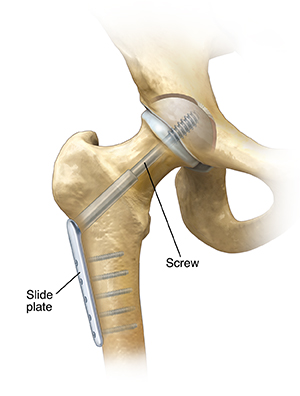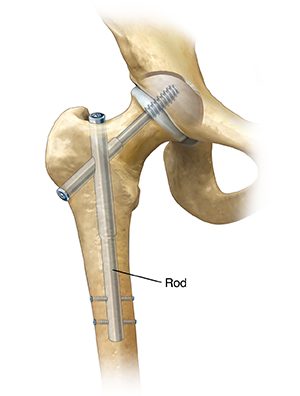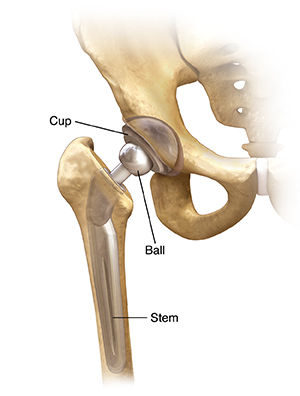The type of surgery you have often depends on where the hip is fractured. In some cases, internal fixation is used. This is when pins, screws, or a rod is placed into the fractured bone to hold it in place as it heals. In other cases, part or all of the hip is replaced. This is done when there's a lack of blood supply to the head of the femur, or if internal fixation isn't advised.
Pins
Metal pins or large screws are sometimes used to repair fractures along the neck of the femur. The pins are inserted through the bone to keep it stable while it heals.
Screw and side plate
A metal compression screw and side plate may be used to repair the fracture. As the bone heals, the screw gets tighter. This allows the edges of the bone to grow together.
Rod
A metal rod or nail may be used if the fracture is along the upper shaft of the femur. The rod is inserted into the bone shaft. A screw keeps the bone edges together as they heal.
Hip replacement
Artificial parts may be used to replace part or all of the hip joint. For a total hip replacement, a new stem and ball are placed in the femur. These fit into a new cup secured in the pelvis. For a partial hip replacement, only the stem and ball are replaced.
Featured in





